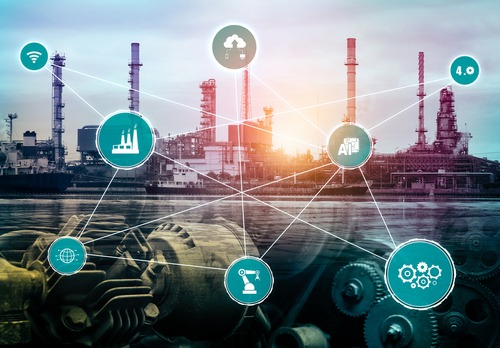New report warns industrial sector could become highest-emitting U.S. sector without rapid decarbonization solutions

A new report from the Rhodium Group determined that quickly expanding industrial decarbonization options will be key to keep decarbonizing the United States economy and avoid the industrial sector becoming the highest domestic emitter by the early 2030s.
Rhodium is an independent research provider, and in this case, it turned to its updated industrial decarbonization model – the Industrial Carbon Abatement Platform (RHG-ICAP) – to estimate deployment and emissions impact of different decarbonization solutions under current policies. In this regard, it noted the Inflation Reduction Act and the Infrastructure Investment and Jobs Act have made helpful investments, but it’s not enough.
Deployment of current carbon capture retrofits and new electrolyzer installations could reduce emissions 81-132 million metric tons in 2040, leading to lowered industrial sector emissions of 5-10 percent. Compare that to overall trends, though, and it doesn’t sound as impressive – since 2005, the report’s authors noted that direct emissions from the industrial sector have fallen just under 7 percent, and today represent more than 1.5 gigatons of greenhouse gas emissions annually. In 2023, they may have accounted for 29 percent of total U.S. greenhouse gas emissions.
On the global scale, emissions have risen 21 percent from industry alone since 2005.
Pivoting back to the domestic front, though, the report showcased how other sectors, such as Transportation and Power – traditionally two of the larger emitters – have and seem set to continue trending downward for years to come. However, industry appears to have more or less flatlined, leaving it to become the leading emitter before the decade’s end.
“Unlike in the power or transportation sector, where large-scale deployment of clean energy technologies like solar panels and electric vehicles is ramping up in a real way and has been for years, many decarbonization options in the industrial sector have not yet been deployed at scale,” the report’s authors wrote.
And industrial emissions are likely to keep rising in the meantime, maybe as much as 12 percent from 2022 levels by 2035, if current policies hold.
The report proposed focusing on energy efficiency, electrification, low-carbon fuels and feedstocks, and carbon capture and storage at scale. By further focusing them on specific subsectors, such as iron and steel, chemical production, food and beverage manufacturing, petroleum refining, and cement production, Rhodium stated that CO2 emissions could be cut by 87 percent by 2050. Improved material efficiency or better planning for material circularity could supplement these efforts.
This comes with a caveat, though, as some approaches are available at commercial scale and proven success, but not all. Others rely on novel technologies with associated risk, and while the federal government has moved to reduce some of that risk, it’s no guarantee it will be enough to get industry to bite long term. Notably, emissions in most major industrial subsectors continue to trend upward or could remain flat through 2035.
Notably, though, the authors reported that carbon capture retrofits and electrolyzer installations could reduce industrial sector emissions by 81-132 MMT in 2040. To close the remainder of the gap, various available but not as widely discussed or examined technologies may be necessary, such as electrification of various temperatures of industrial heat. Yet without government assistance, it may all be moot.
“Additional decarbonization will not occur without meaningful new policy action at all levels of government,” the report said. “Government actions like economy-wide or sectoral emissions targets, GHG regulations targeting industries, clean product standards, additional investment through the tax code or direct investment (including government procurement), or border carbon policies with meaningful in-country limits are needed to drive investment in R&D and deployment of these technologies, improve investor confidence, and overcome a host of non-cost barriers.”
